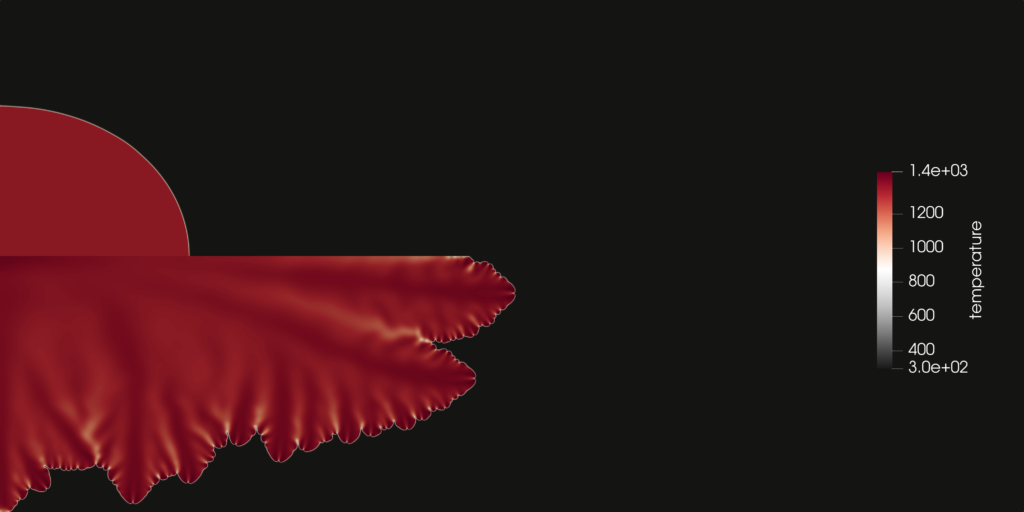🎓 PhD Defense: Jean-Jacques HOK
Wednesday 19 June 2024From 14h00 at 18h00
Cerfacs, JCA room, Toulouse, France
Modelling strategy for the Large-Eddy Simulation of lean hydrogen-air explosions

The climate crisis the world faces today calls for immediate actions to curb down carbon emissions. In particular, a rapid energy transition towards cleaner sources is necessary. Among many candidates, hydrogen stands out as a carbon-free energy vector. However, its storage and transport in big quantities raise safety concerns. Following a leakage, mixed with the surrounding air, this hydrogen can form a highly flammable mixture. In case of accidental ignition of this mixture, different combustion scenarios and regimes are possible, depending on factors such as geometry (dimensions, confinement, presence of obstacles), mixture composition, temperature, pressure or turbulence level. These regimes range from slow deflagration to the transition to detonation in the worst case. To predict the damage induced by an explosion, Computational Fluid Dynamics has the advantage of being safer than experiments and gives access to quantities hard or impossible to measure empirically. This thesis deals with the prediction of lean hydrogen-air explosions using Large-Eddy Simulation (LES). Lean H2-air mixtures are known for their distinctive sub-unity Lewis number, which characterises an unbalance between molecular and heat diffusion processes with major consequences: (1) lean H2-air flames are strongly sensitive to stretch; (2) they are prone to develop flame front cells due to the thermo-diffusive instability. Both constitute accelerating mechanisms which impact the overpressure generated during the explosion. In this work, we show that the Thickened Flame (TF) approach to simulate sub-unity Lewis number flames: (1) induces an amplification of stretch on the flame; (2) combined with the low grid resolution in LES, filters out flame front instabilities. The coupling of these undesired mechanisms can generate an erroneous flame propagation which questions the predictability of LES for lean H2-air explosions. In this thesis, a modelling strategy is proposed to reliably and accurately predict lean hydrogen-air explosions. A new paradigm is considered to separately correct the amplification of stretch effects and model subgrid phenomena due to the thermo-diffusive instability. These two corrections are first developed on canonical configurations and then extended and validated on more realistic explosion configurations.
Jury
- Pr. Ronan Vicquelin (rapporteur) : CentraleSupélec – Laboratoire EM2C (CNRS) – Université Paris-Saclay
- Pr. Ashwin Chinnayya (rapporteur) : ISAE ENSMA – Institut Pprime (CNRS) – Université de Poitiers
- Pr. Nabiha Chaumeix (membre) : ICARE (CNRS)
- Dr. Olivier Colin (membre) : IFPEN
- Dr. Olivier Vermorel (directeur de thèse) : CERFACS
- Dr. Omar Dounia (co-encadrant) : CERFACS
- Antoine Dutertre (invité) : TotalEnergies

